Is Prime Minister Narendra Modi developing worry wrinkles about the outcome of the Lok Sabha elections on 23 May? Is the image he projects with his charismatic rhetoric, his machismo and supremely self-confident air, something of a smokescreen?
Recent weeks suggest that Modi may have sensed that his ability to cast a spell on his countrymen requires some media assistance.
Take for instance, NaMo TV – a television channel devoted to the prime minister. Its logo is PM Modi’s smiling visage, and since it went on air across cable and DTH networks Sunday, it has broadcast every campaign speech by Modi, live.
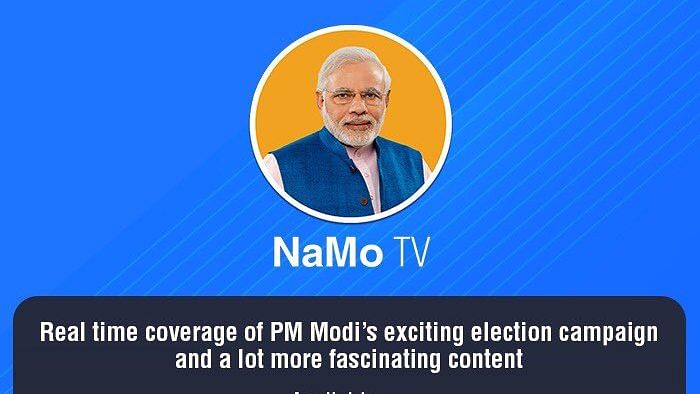
(Again, there have been complaints to the Election Commission by the Congress and others: How can a channel be named after PM Modi, carry his photograph and promote only him during an election campaign?)
Also read: NaMo TV has no broadcast licence, didn’t even apply for one
In between speeches, NaMo TV repeats telecasts of his other speeches – the current favourite is his reply to the motion of thanks to the President’s address during the last Budget session of Parliament (7 February), which is replayed at least three times a day.
There are also TV promos of the many Pradhan Mantri yojanas. Finally, and from the viewers’ perspective the most entertaining, are the films telecast to while away the hours.
These are not just any old films, they are films carefully chosen to reflect Modi, the BJP and its current thinking. Hence John Abraham’s Parmanu on the Pokhran nuclear test during the Vajpayee government, Bose about Subhash Chandra Bose, one freedom fighter the BJP is trying to appropriate; Padman starring Akshay Kumar, based on the true story of a man who created a machine to produce affordable sanitary napkins, which ties in perfectly with Modi’s Swachch Bharat campaign.
The question is, why does the prime minister need a dedicated TV channel to promote him when he already has many news channels furthering his cause – think Times Now, Zee News, Republic and of course DD News — and others also cover his each and every move or utterance?
For instance, Sunday’s ‘Mein Bhi Chowkidar’ meeting in Delhi was a live broadcast across channels.
Why does he need a TV channel, when he has nearly 47 million Twitter followers, 15 million Instagram followers, dedicated WhatsApp groups, and the entire BJP chanting ‘Modi, Modi, Modi’?
Also read: NaMo TV makes mockery of laws & poll code. It should be shut down immediately
PM Modi also granted Republic TV’s Arnab Goswami an exclusive interview. Goswami was so delighted with this accomplishment that the channel thanked PM Modi by telecasting the interview for three days in a row, sometimes thrice a day.
The interview was mild and only mildly interesting as Goswami did what he had done in a previous interview with Modi in 2016 – asked him leading questions, this time about the A-SAT missile strike, Pulwama attacks, Balakot, etc., which allowed him to project himself as a strong, decisive leader and to dismiss the opposition with disdain.
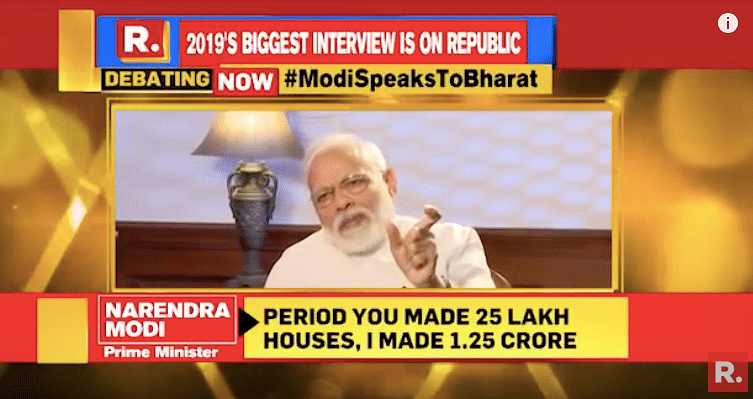
This is the same message he sends out in his campaign speeches – speeches which are very clearly intended for a national television audience rather than the public at the rally venue.
As journalist Sharat Pradhan said on Times Now, Modi is busy developing a “self-created” narrative on a “terrible insecurity hovering over the country” when no such threat exists.
Contrast this Modi interview with the one he gave Goswami before the 2014 elections (Times Now), in which the PM claimed 95 per cent of his campaign speeches were about “inflation, unemployment, farmers’ problems, security, etc.”
That Modi’s media messaging now centres on fear and insecurity rather than the NDA’s achievements, indicates the need for an overarching narrative to whip up emotions, one that will draw attention away from “unemployment, farmers’ problems…’’ etc., in the last five years.
Also read: Bollywood outcast Vivek Oberoi returns with PM Narendra Modi by his side to reset his career
Otherwise, why would PM Modi feel the necessity to take to the airwaves, last week, to announce the successful testing of India’s anti-satellite weapon in space? Although this was no mean achievement, it didn’t require the prime minister to address the nation in a live televised broadcast, announced well before the event to leave the country on tenterhooks for the better part of an hour.
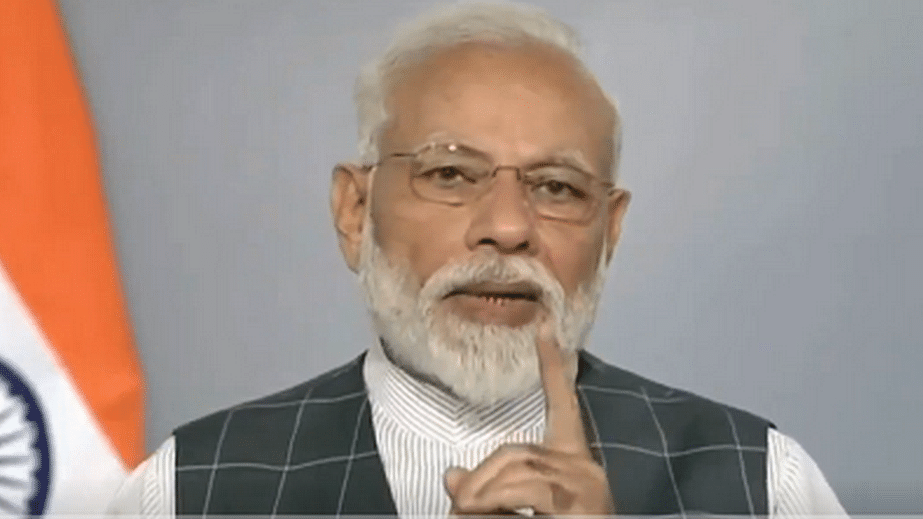
The Election Commission dismissed objections and complaints that this announcement had infringed the model code of conduct, on a mere and weak technicality: the national, publicly funded broadcaster, Doordarshan, had not recorded it.
It ignored the more important issue: Was it appropriate for the prime minister to make such a broadcast, in the middle of an electoral campaign – a move TV news channels felt could only “work to (BJP’s) advantage” (CNN News18) and have “an impact on the elections” (Times Now).
That Modi went ahead with the broadcast, knowing it treads a fine line on the model code, and would raise the hackles and many questions, betrays some uneasiness if not anxiety.
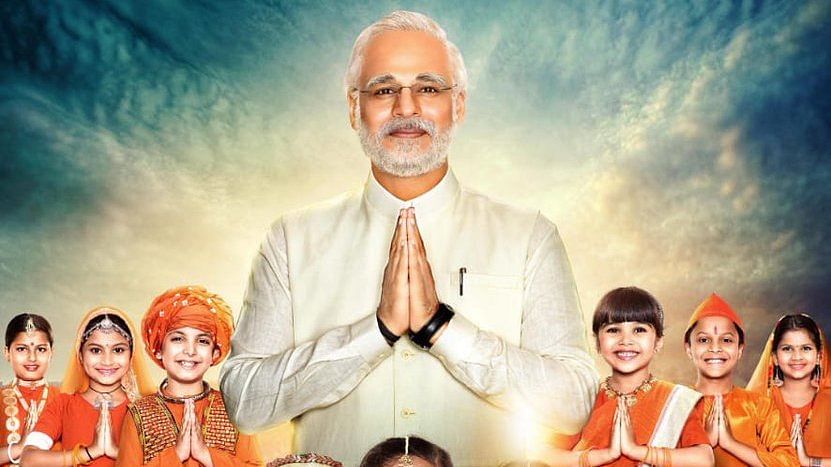
Modi won the 2014 elections with a great deal of help from the media and TV news channels, but without a dedicated TV channel or biopics.
Both flank him now – does that mean Prime Minister Narendra Modi is a worried man?


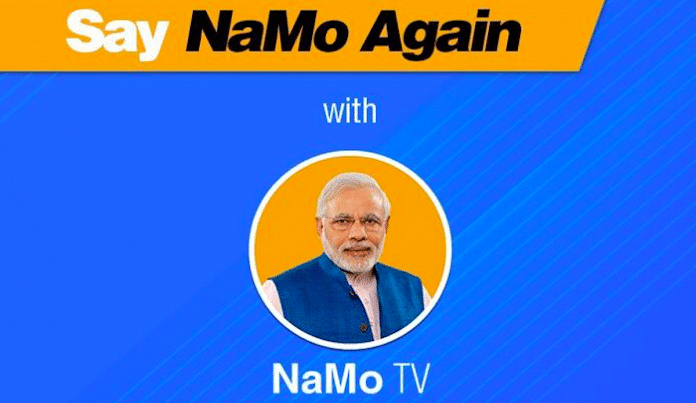

All stated here are true. I have been seeing this for the last 30 years & I always wondered why. As a kid I used to think there were few who made all the decisions, Indira Gandhi, Rajiv Gandhi, Buta Singh, Zail Singh, Natwar Singh, Basant Sathe, Narshimha Rao, Madhav Rao, Rajesh Pilot, Lalit Makan, HKL Bhagat etc. Much later I understood there were others like Vajpayee, Advani, Mulayam, Dandvate, Fernandez, Chandra Shekhar, Devi Lal. Now I know the answer & I am not surprised. This article has immensely assisted in getting the answers.
Not necessarily. It may just mean that the BJP has a lot of money and funding and thus trying everything under the sun except talking about its five year performance.
The XYZ ways don’t seem very correct in the public eye. The book on Rafeal Deal is prevented from being launched whereas there is no issue with the modi biopic.
NaMo streaming without a licencd.
And there is a escalating trend of monologue. The nation surely would want to know as to why does the PM only interview with Mr. Arnob Gowsami?
This is just another way of reaching out to people. In 2014 it was some ABC ways and now XYZ ways to avoid monotony. To take a research thesis out of it is stupidity.